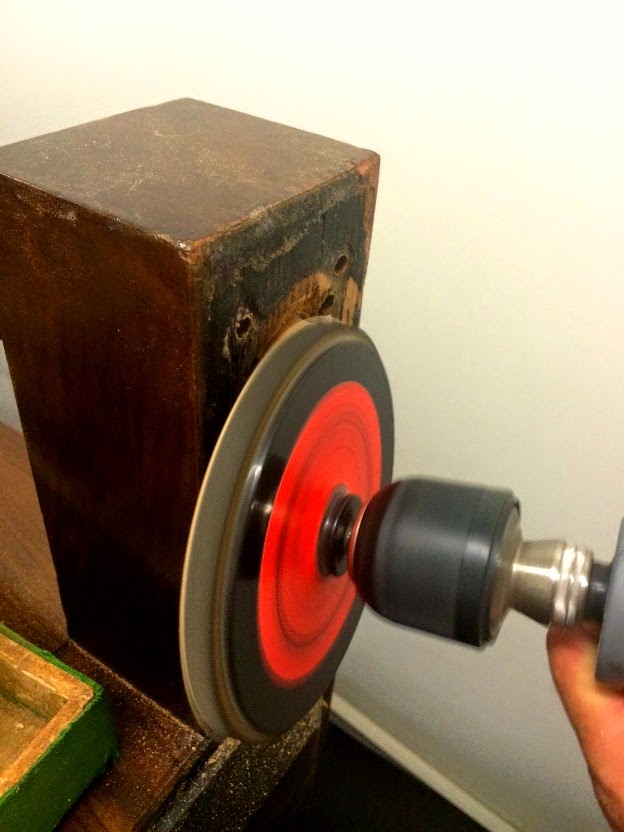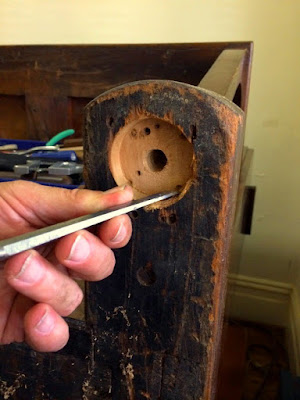The intrepid Caped Regulators (piano pamperers to the stars... and you) have embarked on a series of piano pedicures.
Cast iron casters cast asunder.
Is it six-monthly Hard Rubbish collection already? Does this quaint sled come with a team of oxen? Huskies? Reindeer? Just drizzle. It's the trusty piano tilter, elegant of design and fashionably shabby-chic. Pooch and leg provided for scale.
The tilter hooks under the base of an upright piano. With its perfect design (and super-human strength) one person can transfer a piano onto its back, ready for tootsie tickling. Piano provided for scale.
Here, the umpteenth iteration of casters fitted to this piano have failed. Any caster with a flat plate but no shaft extending up into the piano's base (for additional strength and stability) will probably fail, as this one has.
Sleeves are provided with the new casters, but the holes on this piano are larger than the sleeves.
No half-measures - measure!
Off to the workshop to manufacture larger wooden sleeves using a series of unenviably large tools.
Insert the inserts.
Tidy.
Test fit. Is making this tall piano taller too tall an order?
It is decided to deploy some old-fashioned woodwork to chisel mortises.
Dodging old holes and weak-points, the caster plates are fitted.
With these wheels, moving a large upright across the flat is surprisingly easy.
The piano receiving this pedicure is a beautifully-restored (inside and out) Beale-Vader piano. These pianos possess highly innovative and ingeniously-designed steel wrest-planks* (pin blocks) but are usually seen with their actions and internal materials in deplorable condition.
Casters. Top: The robust yet floor-friendly casters being fitted. Middle: Perfectly respectable brass casters - fine in many circumstances, but not if you want to regularly and repeatedly move a piano (in a recording studio setting, for example). Bottom: Old-fashioned casters with a square plate to fit to the piano. Depending on the treatment they receive, they could very easily be found to be inadequate.
Here's another dear old piano down at heel. There is evidence of myriad past pedicures.
OK, let's sort out these bunions! Drills, hole saws and Forstner bits have been readily deployed, but there is still the need for a little old-fashioned woodwork.
These splendid new tootsies deserve to be honoured...
...they deserve their place in the sun. P.S. Pianos do not like sun!
Here, a very new piano (without damage or frailty) still needs a little woodwork to slightly enlarge the existing recesses to fit the new caster plates.
This studio piano can now waltz around the room, cutting a rug without cutting the rug...
...leaving the dance floor unsullied.
If untilt isn't a word yet, I'll keep using it until(t) the Macquarie Dictionary relents. I conveniently conclude that this is blokey stuff, and that I can occupy myself creating art as I realize I've nabbed a serioso selfie in the piano's shiny patina.
Tangentially tootsie-related, here's a leg end - being adapted to temporarily fit another piano, with a different method of attachment.
A piano gets a leg-up. At this rate, surely the pianos in the workshop will be walking out the door.
A piano finally back on its (or someone else's) feet, awaiting major restorative work.
* Conventional piano pin blocks comprise many cross-laminations of hardwood.
Related posts:

























